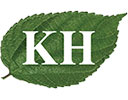Beetroot Extract
Botanical Source: Beta vulgaris L.
CAS No.: 89957-90-4
Part Used: Root
Appearance: Fine purple red or red powder
Specifications: Betanin 0.5%-25%; Betaine 5%; Nitrates 1%-25%;
30 color value, 50 color value, 4:1, 10:1
Botanical source:Beta vulgaris L.
Synonyms:Red Beet Extract Beet Root Powder Beet Fiber Powder
 Share
Share
 Contact number
Contact number
+86-731-89865681
| Appearance: Fine purple red or red powder | Particle Size: 80 Mesh |
| Loss on Drying: NMT 5.0% | Ash Content: NMT 5.0% |
| Total Plate Count: <10,000 cfu/g | Total Yeast & Mold: <1000 cfu/g |
| E. Coli: Negative | Salmonella: Negative |
| Arsenic (As): NMT 1ppm | Lead (Pb): NMT 1ppm |
| Cadmium (Cd): NMT 1ppm | Mercury(Hg): NMT 0.5ppm |
Beetroot, which originated from the Mediterranean coast, is now mainly produced in Ukraine, Russia, the United States, Italy, Romania, Britain and other countries. Its main ingredient is sucrose, and it also contains a variety of amino acids, organic acids, water-soluble vitamins, calcium, iron, magnesium and other minerals, with functions of improving the digestion.
Beet Root Extract can be used as vegetable, made for sugar and also as feeding material. Mainly in the feed industry, betaine is an important methyl donor to promote animal metabolism. As a natural, healthy, and efficient feed additive, the amount added in the feed is about 0.1%. Betaine's unique nutritional and physiological regulation functions will help it brilliant in the application of healthy breeding.
1, Promoting the metabolism of animals
2. Physiological control function
3. Betaine and its salt can increase the yield of feed yeast
2. Storage: Keep tightly sealed, store away from moisture, strong heat and sunlight;
3. Lead time: Usually 7-10days after order confirmed;
4. Shelf Life: 2 years if sealed and stored in the recommended conditions;


